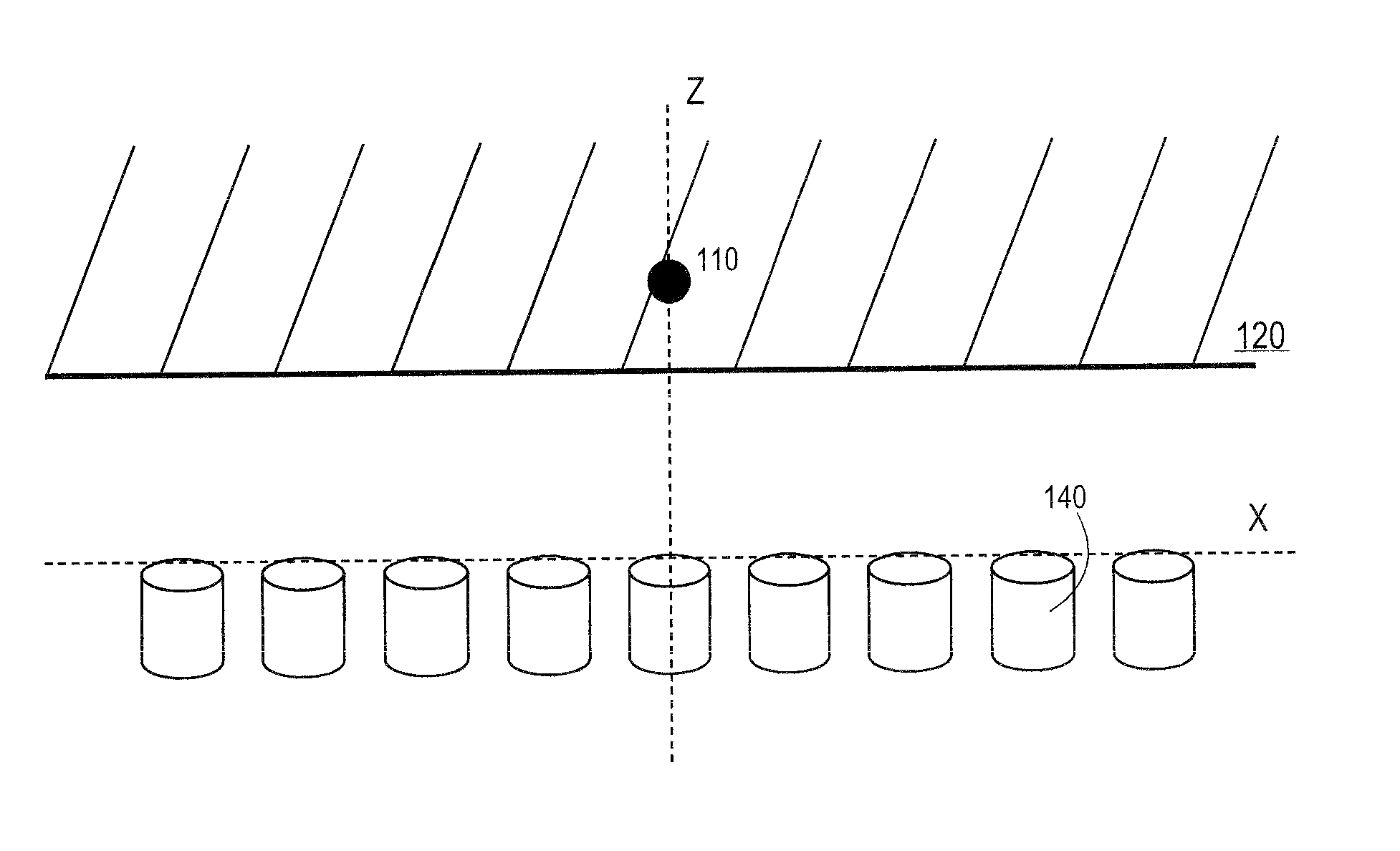Noncollimated 3D radioactive source localization technique
- Summary
- Abstract
- Description
- Claims
- Application Information
AI Technical Summary
Benefits of technology
Problems solved by technology
Method used
Image
Examples
Embodiment Construction
[0002]1. Field of the Invention
[0003]This invention relates generally to detection of a radioactive source and, more particularly, to use of a non-collimated localization technique for determining position and strength information of an unknown radioactive source.
[0004]2. Background of the Invention
[0005]Conventional techniques for localizing a radioactive source include positron emission tomography (PET) and computed temomgraphy (CT). For example, with PET medical imaging, back-to-back x-rays are emitted from a source within the body which is surrounded by detectors. For CT imaging, the x-rays are emitted from a known position outside the body and fired through the body towards the detectors. In a single photon emission CT imaging (SPECT), photons may be emitted from within the body and the detector is collimated to only allow photons from the same angle to be detected.
[0006]In all these conventional techniques, the angle of photons hitting the detector must be known or set either ...
PUM
 Login to View More
Login to View More Abstract
Description
Claims
Application Information
 Login to View More
Login to View More - R&D
- Intellectual Property
- Life Sciences
- Materials
- Tech Scout
- Unparalleled Data Quality
- Higher Quality Content
- 60% Fewer Hallucinations
Browse by: Latest US Patents, China's latest patents, Technical Efficacy Thesaurus, Application Domain, Technology Topic, Popular Technical Reports.
© 2025 PatSnap. All rights reserved.Legal|Privacy policy|Modern Slavery Act Transparency Statement|Sitemap|About US| Contact US: help@patsnap.com



